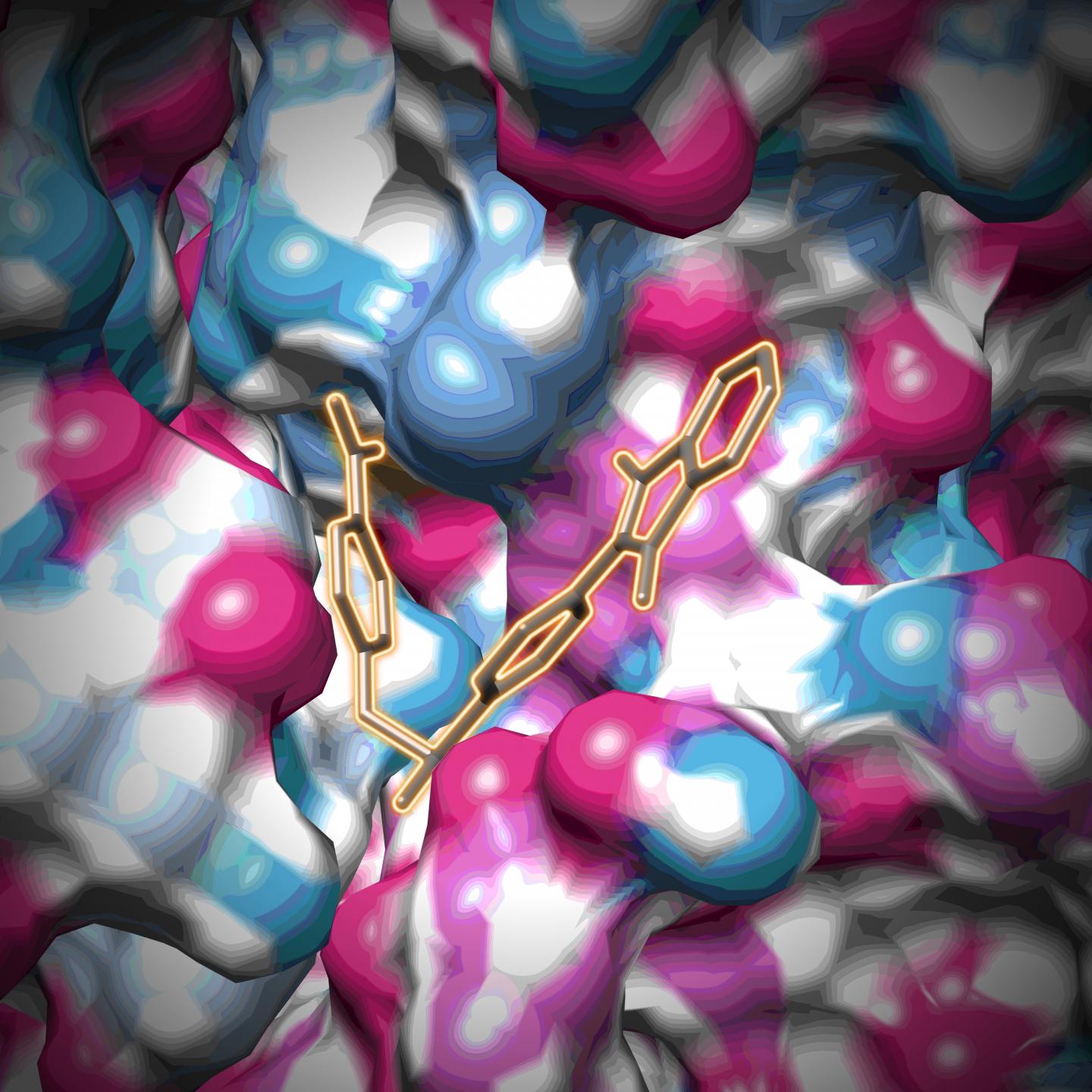Structural feature may lead to antivirals for the common cold, polio, and other pathogens

Credit: James Geraets
Discovery of a new feature of a large class of pathogenic viruses may allow development of new antiviral medications for the common cold, polio, and other illnesses, according to a new study publishing June 11 in the open-access journal PLOS Biology by Rana Abdelnabi and Johan Neyts of the University of Leuven, Belgium, and James Geraets and Sarah Butcher of the University of Helsinki and their colleagues.
Picornaviruses include rhinoviruses and enteroviruses. Rhinoviruses cause millions of cases of upper respiratory infections (“colds”) yearly and contribute to asthma, and enteroviruses are responsible for millions of infections including cases such as meningitis, encephalitis and polio. There are currently no antivirals that can be used for the treatment or prevention of any of the rhino- or enteroviruses.
To replicate, viruses must interact with host cells, and in doing so, often need to change shape; stabilizing the virus particle is therefore thought to be a promising strategy for preventing replication. In a search for potential antiviral candidates, the authors found a compound that stabilized a model picornavirus. They performed cryo-electron microscopy (cryo-EM) of the drug-virus complex to determine how the drug exerted its effect. Cryo-EM involves combining thousands of two-dimensional images to develop a highly detailed three-dimensional image of the target.
Although picornaviruses have been studied for decades, the authors discovered a previously unknown pocket, or indentation, on the surface of the virus, in which the compound had lodged, thereby stabilizing it against the kind of shape change that would allow interaction with host cells. The team then used the compound as a starting point to generate multiple variants of the antiviral molecule to maximize the activity against a broad range of picornaviruses.
A major challenge in developing antiviral medications is that viruses mutate quickly, changing in ways that make a once-useful drug ineffective. While it is possible that the newly-discovered pocket may also mutate to make picornaviruses resistant to therapies developed against them, the authors suggest the pocket may be crucial enough for viral replication that viruses containing mutant versions may be less viable, making the drug relatively “resistance-proof.”
Further work to develop these compounds into effective drugs is ongoing. “These results open up a new avenue for the design of broad-spectrum antivirals against rhinoviruses and enteroviruses, both of which are major human pathogens,” Neyts said.
###
Peer-reviewed / Experimental Study / Cells
In your coverage please use this URL to provide access to the freely available article in PLOS Biology: http://journals.
Citation: Abdelnabi R, Geraets JA, Ma Y, Mirabelli C, Flatt JW, Domanska A, et al. (2019) A novel druggable interprotomer pocket in the capsid of rhino- and enteroviruses. PLoS Biol 17(6): e3000281. https:/
Funding: This work was funded by the BELVIR project from BELSPO (IUAP), People Programme (Marie Curie Actions) of the European Union’s Seventh Framework Programme FP7/2007-2013/ under REA grant agreement number 612308 AIROPico (to SJB and JN), a postdoctoral mandate Internal Fund from KU Leuven (PDM/17/178 to RA), a Fellowship from China Scholarship Council (CSC) (grant number 201406040056 to YM), Academy of Finland (275199 to SJB), and Sigrid Juselius Foundation (to SJB). The funders had no role in study design, data collection and analysis, decision to publish, or preparation of the manuscript.
Competing Interests: The authors have declared that no competing interests exist.
Media Contact
Johan Neyts
[email protected]
Related Journal Article
http://dx.




